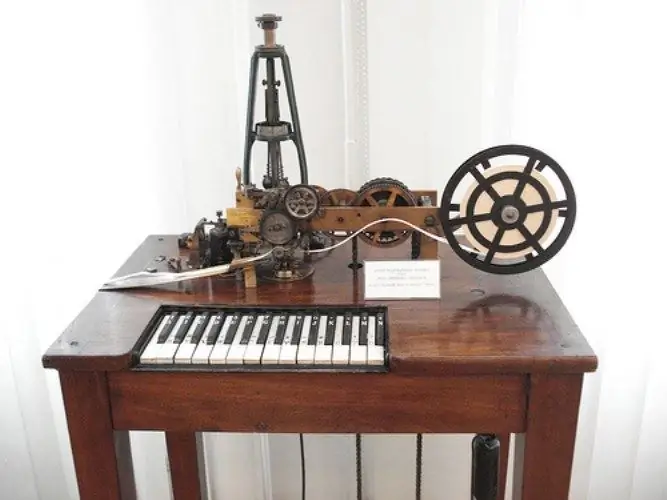- Author Nora Macey [email protected].
- Public 2023-12-16 10:17.
- Last modified 2025-01-23 08:47.
The telegraph at one time became a breakthrough in the field of communications. The transmission of information over a distance by wire has made it possible to expand the possibilities of control and data exchange. Thanks to the telegraph, its wireless version later appeared - the well-known modern radio. Is it possible to build a working model of a telegraph device with your own hands?

It is necessary
- - metal plates;
- - wooden plank;
- - electromagnet;
- - two electric lamps;
- - electrical wire;
- - fasteners (screws, self-tapping screws);
- - screwdriver.
Instructions
Step 1
Make a transmitting device for a telegraph installation. It includes the transmitter itself, the key and the manipulator. Make the base of the transmitter from a wooden board of a suitable size, attaching all the main parts of the transmitter to it.
Step 2
A lever-shaped key is used to close the circuit and interrupt the current. To make the lever, use the metal strip to which the axle is attached. Press one end of the lever with a spring against the metal tab with the pressure screw. Using such a screw, connect the arm with a wire to the receiver and ground.
Step 3
Start making the receiver. The classic telegraph receiver includes a vertical electromagnet, a rocker arm and a paper tape pulling mechanism on which the lever leaves symbols. When the current flows, the electromagnet will attract the metal rod towards itself. The other arm of the lever will rise and press the point against the paper band, which is moved by a watch-like mechanism. Inscriptions of conventional characters in the form of dots and dashes are formed on the tape.
Step 4
In the simplest version of the telegraph device, you can do without a cumbersome mechanism. Use as a receiving element an ordinary light bulb connected to the wire coming from the transmitter. Such an optical telegraph would also allow the exchange of Morse code signals.
Step 5
To be able to exchange information two-way, make a set of two receivers and transmitters. Connect the devices with an electrical wire. Connect an electric battery or a battery corresponding to the parameters of the light bulbs to the circuit.
Step 6
Check the correct wiring of the electrical circuit. Press the lever with your hand. When it touches another protrusion connected to the battery, current will be sent through the line to the receiving device. If everything is correct, the person on the other end of your telegraph line will see a series of signals. And of course, don't forget to learn Morse code.






